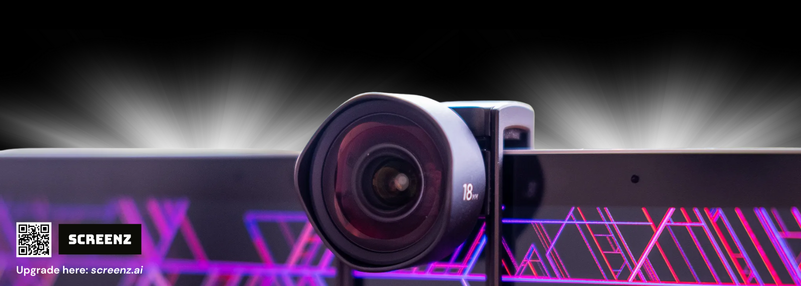The Anatomy of Smarter Hiring in the Age of AI
Hiring is one of the most critical decisions any company makes. A single great hire can accelerate growth, while a single bad hire can set a team back months. Despite its importance, the hiring process is still broken in many organizations.
Most companies continue to rely on outdated methods: job boards, keyword-scanned resumes, and unstructured interviews. These practices often reward candidates who are good at “playing the hiring game” — polishing resumes with buzzwords or rehearsing common interview answers — rather than surfacing those who will truly perform in the role.
The result? Companies unintentionally eliminate up to 87% of their best-fit candidates before they even reach the shortlist. Not because those individuals lacked ability, but because the process wasn’t designed to capture their value.
To fix this, hiring needs to be reimagined. It should not be a loose, intuition-driven activity, but a structured system that can be applied consistently and scaled effectively. When paired with AI, that structure becomes far more powerful.
Why Frameworks Matter in Hiring
At its core, hiring is problem-solving. The challenge is clear: filling a role. The solution is finding the right person. But without a framework, this process quickly becomes inconsistent and prone to bias.
Consider this example: two managers interview the same candidate. One focuses heavily on technical expertise, while the other pays more attention to communication style. Without a shared framework, evaluations become subjective, and decisions risk being driven by preference rather than capability.
Frameworks solve this problem. They create clarity and fairness by breaking down evaluation into specific, repeatable steps. Every candidate is measured against the same criteria. When combined with AI, these frameworks also scale seamlessly — ensuring every applicant receives a fair opportunity, not just those who make it past the resume screen.
The Anatomy of a High-Quality Hiring Process
A strong hiring framework typically includes six essential parts. Skipping even one can introduce bias, inefficiency, or missed opportunities.
Role Clarity
Most job descriptions are vague, filled with terms like “self-starter” or “team player.” True role clarity defines not just the title, but the outcomes expected. Which business goals will the hire impact? What skills and traits are non-negotiable? Clear definitions align stakeholders and prevent mismatched expectations.
Task Alignment
Hiring should reflect what candidates can actually do. Practical assessments, case studies, or real-world scenarios provide a direct connection between job requirements and performance, moving beyond resumes and generic interview questions.
Context
No role exists in isolation. The right hire depends on company stage, industry dynamics, and team culture. Context ensures candidates are evaluated not just on individual skills, but on their ability to succeed in your unique environment.
Format
This defines how you evaluate candidates: structured interviews, AI-driven assessments, technical challenges, or a blend of methods. A consistent format improves fairness and scalability.
Examples
Candidates perform better when expectations are clear. By sharing examples of strong deliverables, communication styles, or project outcomes, you give applicants a fair chance to showcase their abilities.
Timeline
The longer the process drags on, the greater the chance top candidates will move on. Defined timelines keep hiring efficient and ensure decisions are made while talent is still engaged.
Proven Hiring Frameworks
Several simple but effective models can guide modern hiring:
• RTF (Role, Task, Format): Ensures clarity from the start. Define the role, test with relevant tasks, and evaluate through a fair, consistent format.
• SOLVE (Situation, Objective, Limitations, Vision, Execution): Ideal for senior or complex hires, emphasizing real-world problem-solving.
• CARE (Context, Action, Result, Example): A structured interview approach that highlights how candidates respond to challenges and the results they achieve.
Each of these models creates consistency and reduces reliance on intuition, enabling more objective decision-making.
Do’s and Don’ts of Modern Hiring
Even with strong frameworks, companies must avoid common pitfalls.
Do:
• Standardize scoring so every candidate is measured against the same benchmarks.
• Give candidates equal opportunities through clear instructions and fair tasks.
• Automate repetitive tasks so hiring managers can focus on deeper evaluation.
Don’t:
• Depend solely on resumes — they exaggerate and overlook potential.
• Rely on unstructured interviews — they are biased and unreliable predictors of performance.
• Make decisions on “gut feel” — intuition can complement but should never replace structured evaluation.
How AI Enhances Hiring Frameworks
Frameworks bring structure. AI brings scale. Together, they create hiring processes that are both rigorous and efficient.
This is where Screenz.ai makes the difference.
• Structured interviews at scale give every candidate an equal opportunity.
• Assessments evaluate reasoning, soft skills, and potential beyond the resume.
• Automated reports simplify shortlisting and enable faster, more confident decisions.
By pairing frameworks with AI, companies expand their accessible talent pool. Instead of rejecting candidates due to bias or bandwidth limits, they uncover hidden talent and move faster toward the right hire.
Final Thoughts
Hiring has long been plagued by inefficiency and subjectivity. But by applying structured frameworks and leveraging AI, companies can finally build systems that are fair, consistent, and scalable.
The reality is this: most organizations believe their talent pool is large, but flawed processes make it much smaller than it could be. AI doesn’t just automate hiring; it expands access by giving more candidates a fair chance to shine.
Screenz.ai exists to enable this shift. By modernizing hiring, we help businesses build stronger teams, faster, and with less bias.
👉 Ready to transform how you hire? Learn more at screenz.ai.
.avif)









